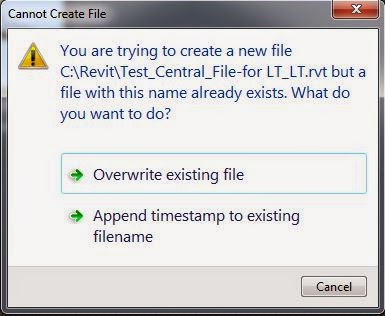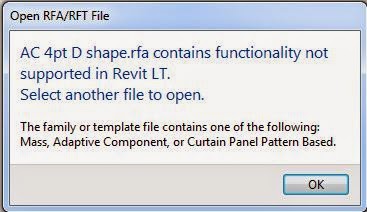Last week AUx came to Sydney - it gave us an opportunity to meet some of the Autodesk folks and hear about some of their new developments and plans for the future. We also got to hear about their plans for software licensing . . . .
Revit & Building Design Suite Licensing
The Future
It seems like Autodesk are heading towards a license rental system rather than software purchase. We heard from Autodesk that in the not too distant future, the new license rental scheme will become the only way to accquire Revit or Building Design Suite (BDS) licenses. Of course anyone who already owns (purchased) licenses will have those in perpetuity - and providing they pay subscription they will get upgrades. What this means is that most companies will end up with a mixture of rented and owned licenses. This sounds well and good because it allows flexibility to expand/contract the number of licenses. The reality may not be quite so good - the method of managing the two different systems is quite different and will have to run in parallel:- Purchased licenses are usually part of a floating license pool, managed by the Autodesk license server on your network - this allows anyone on that network to use an available license (until all are taken). This is an admirable system, albeit with some technical and logistical limitations (see next section);
- My understanding is that rented licenses are assigned to specific usernames (somewhat like individual purchased licenses being assigned to specific computers). It is not clear how easily these are transferred between users as situations change - as they inevitably do (people go on leave; are reassigned to different projects or locations; people work part time; working at home or on the road; job-sharing etc)
- Inevitably we will need to move users between the floating license pool and named user rented licenses (for reasons described above); Will we need to change the nominated usernames on rented licenses?
- Will we need to change the licensing and/or serial numbers when this happens?
- Will we need to reinstall software or will it be a simple license setting?
- Will we need to contact Autodesk or our reseller to change rented license usernames? How long will this take? We need to make such changes in minutes or hours, but historically license reassignments take days or weeks.
- Will we need to employ more staff just to manage licensing? Or will the IT/BIM managers just add that to their list of tasks?
The Past (& Present)
Currently the floating license server for Revit and BDS has some extremely frustrating limitations on use:- It only allows a company to run 4 concurrent versions of the software - for example, the license pool will cover version 2011, 2012, 2013 & 2014. If you want to upgrade your BDS licenses to version 2015, you have to drop the earliest one (2011) from the list. This includes all the software in the design suite - so that if you want to run Revit 2015, then your versions of Autocad, 3D Max etc must also be v2012 or later. [NB. until a couple of years ago this was only 3 concurrent years]
- If we want to access an archived project in an old version of Revit (say v2008), we can either upgrade it (slow and it may not work), or we can open it in the old software - but once re-installed, we cannot activate the software because the license pool prevents this!
- Revit software is not backwards compatible: Each year the file format is changed - old versions cannot read newer Revit files; you cannot save a file back to an older version. What this means is that on collaborative projects, all team members must be running the same version of Revit. The reality is that many companies work on different projects, each of which may be on different Revit versions (as agreed by each team) - so each company must maintain several active versions of Revit.
- If you are using BDS, you can open several different software packages within the suite simultaneously (eg. Revit, Autocad, 3D Max etc). If they are all the same version number (eg. Revit 2015, Autocad 2015 and 3D Max 2015), you will only take one license out of the pool; if they are different version numbers, it takes one license from the pool for each year (eg. Revit 2015, Autocad 2011 and 3D Max 2013 will use 3 licenses). What this means is that it becomes desirable to upgrade all members of the suite and all projects using the suite simultaneously.
- Because of the file format change in Revit, and collaboration issues it becomes inportant to upgrade Revit every year. Typically users do not want to upgrade other parts of the BD Suite annually because of customisation, plug-ins etc - they often skip a year or two for Autocad and 3D Max. This upgrade cycle mismatch within BDS is hard to manage and causes many BIM/IT managers headaches around the world.
The Present
At AUx Sydney we were told by Autodesk executives that once we own any version of an Autodesk product, we are legally entitled to licensing to allow the use of it at any time. This means that if we want to run more than 4 concurrent versions on our network, or even to activate older versions to retrieve archived projects, we can get license files from Autodesk to do this at any time. Although I have once or twice asked a reseller to make a special dispensation (they organised an extended 5 year concurrent license file from Autodesk) - I did not realise that this was considered to be standard practise by Autodesk.Yippee - this means that all we need to do is ask Autodesk for extended floating license files to cover all the years of software that we owned, and hey presto: problems 1 & 2 (above) are solved. Given the time it takes and forms to be filled out, it may be wise to do this in advance of any requirements; another benefit would be to avoid replacing license files and rebooting license servers, which are notoriously fickle.
The Future (Again)
Wouldn't it be wonderful if Autodesk took away all these restrictions? Here is what they could do to make our lives easier:- Increase the number of concurrent years that are automatically built into supplied licenses to include all the years that we have purchased (or at least 6 years instead of 4, would probably eliminate half the problem situations around the world).
- Unbundle BDS ! Or at least unbundle the licensing file so that we could more easily extend the Revit licenses without messing with the other software.
- Lift the restriction of using up one floating license per year/version of software in use - so that we could open a copy of Revit 2015, Autocad 2011 and 3D Max 2013 on the same computer but only use one license from the pool.
- Somehow tackle the backward compatibility issues! I know this is technically difficult, but we'd love to be able to save a model back to an older version even if we lost some functionality. Maybe they could stop changing the file format so often - every 2 years would help a lot.

















